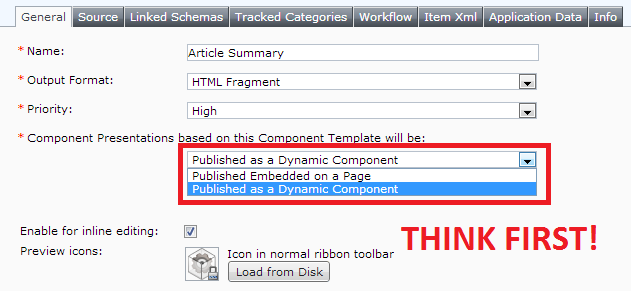As a Tridion an SDL Web developer, you’ve very likely converted a single block of HTML design into appropriate Tridion Building Blocks. The idea of breaking a page into types of content, represented in Tridion as Component Presentations, is not new to you. But have you “sliced” a Component by sets of fields?
A few months back, Damian Jewett, explored the idea of multiple Template Layout Building blocks. I’m following up with a potential use case for this approach along with a parallel idea with Component Templates instead. We can call this slicing, where we have a consistently used subset of fields out of a collection of Component fields.*
*I first heard the term “slice,” in a slightly different context, from a French design agency after they learned how Tridion worked.
First read Damian’s post. Continue reading
